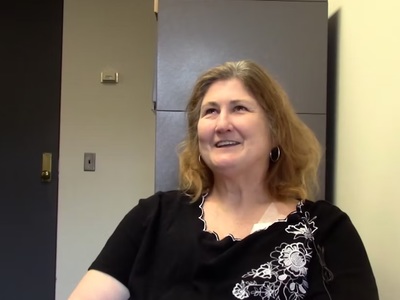Lainey

See full story
Lainey was first diagnosed lymphoma in her 30s, and has since lived through breast cancer, endometrial cancer, and most recently mesothelioma. Learn more about Lainey’s experiences with cancer and cancer risk that runs in families here. Lainey is currently participating in a clinical trial for a drug previously approved for lung cancer that “they’re trying to get FDA approved” for mesothelioma. When offered, Lainey’s motivations were selfless, and she jumped at the chance to do what she could “to help.” Lainey knew “it may not help me, but it may help others” and she was “perfectly fine with that.” Since starting the trial though, Lainey has seen “about a 60% shrinkage” in her tumors “which is absolutely amazing.” Being part of a clinical trial has extended her life and “instead of having maybe a year to live” she can now “look forward to a little bit longer.” This success has made Lainey feel a renewed motivation “to fight this.”
Specific to the trials, Lainey receives immunotherapy “feel[s] great” even though she “expected” to feel “sicker.” Lainey is a “fighter,” recognizing that “it’s perspective” and refuses “to cry and whine about it” because she’s been there before and is “done with that.” Lainey is a strong self-advocate advocate. She reviews every CAT scan report and prepares questions for her upcoming visits because she would “rather talk to” her doctor about her trail and results than “looking up Wikipedia” because “there is so much information out there.” Aside from having her daughters to “live for” Lainey finds that helping others is her “purpose in life.” Previously, Lainey has felt like she “floundered” and didn’t “really have a purpose” but participating in a trail is her way of “hopefully doing something to help someone.”
